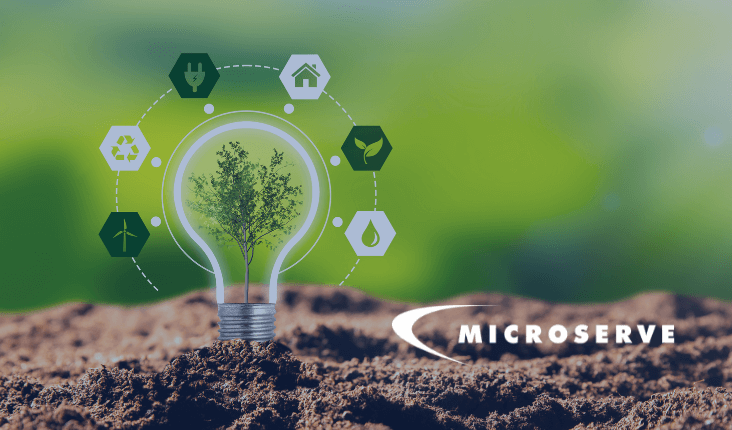In the face of pressing environmental challenges, the importance of sustainability and environmental consciousness in the business world has reached a critical level. Our planet is facing unprecedented threats, including climate change, biodiversity loss, and resource depletion. As businesses play a significant role in contributing to these issues, adopting sustainable practices has become an urgent necessity. This blog post delves into the reasons why we can’t delay our actions any longer and introduces the concept of the Triple Bottom Line (TBL) as a framework to address these challenges. This is the first instalment of our three-part blog series focusing on the importance of sustainability an environmental consciousness in the business world.
Environmental Challenges
The state of our environment demands immediate attention. Global carbon dioxide (CO2) emissions continue to rise, reaching a record high of 36.8 billion metric tons in 2022, contributing to the escalating climate crisis1. The consequences of this rise are evident through extreme weather events, rising sea levels, and disruptions to ecosystems worldwide. A new study showed that some of the extreme temperatures recorded this year around the world would have been ‘virtually impossible’ without the influence of human-caused climate change5. As examples of some of the consequences, Greece has seen the largest evacuations in its history due to wildfires, and it’s estimated that approximately 61,000 people died across Europe in 2022 because of heat waves6.
Biodiversity loss is another alarming concern. According to the Intergovernmental Science-Policy Platform on Biodiversity and Ecosystem Services (IPBES), up to one million species are at risk of extinction due to human activities, such as deforestation, habitat destruction, and pollution2.
Additionally, the depletion of natural resources poses a substantial threat. The World Wildlife Fund’s Living Planet Report indicates that humanity’s ecological footprint exceeds the Earth’s capacity to regenerate by 56%—meaning it would take 1.6 Earths to sustain current consumption levels3.
Business Responsibility and Environmental Impact
Businesses, including the tech industry, play a significant role in environmental impact. The rapid growth of the tech sector has led to an increasing demand for electronic devices, data centres, and cloud services. In 2019, global e-waste reached a staggering 53.6 million metric tons, with only 17.4% being formally documented and recycled7.The production, use, and disposal of these devices generate substantial electronic waste (e-waste) and contribute to resource depletion. Data centres, crucial components of the tech industry, consume about 1% of the global electricity supply8. This high energy demand not only drives up greenhouse gas emissions but also places significant stress on the planet’s resources.
Moreover, businesses in various industries often follow the take-make-waste concept—a linear economic model where resources are extracted, products are manufactured, used, and then discarded as waste after their useful life ends. This approach disregards the finite nature of resources and results in a substantial ecological footprint.
In response to these challenges, businesses must take responsibility and adopt sustainable practices. Embracing a circular economy approach can promote product longevity, repairability, and recyclability, minimizing waste and resource depletion. Additionally, companies can reduce their environmental impact by embracing renewable energy sources and energy-efficient technologies to lower greenhouse gas emissions.
The Triple Bottom Line (TBL)
To address these pressing challenges, businesses must adopt a holistic approach that considers their impact on society and the environment, not just their financial performance. The Triple Bottom Line (TBL) framework provides a solution by encompassing three dimensions: social, environmental, and financial.
- Social Dimension: The social aspect of TBL urges businesses to prioritize the well-being of their employees, customers, and communities. By fostering inclusive workplaces, supporting local communities, and upholding human rights, businesses can create positive social impacts.
- Environmental Dimension: The environmental pillar of TBL compels businesses to reduce their ecological footprint. Implementing energy-efficient practices, reducing waste, and investing in renewable energy sources are crucial steps towards mitigating environmental damage.
- Financial Dimension: While some critics argue that sustainable practices may lead to increased costs, the financial dimension of TBL highlights the long-term benefits of sustainability. Studies have shown that companies with strong environmental, social, and governance (ESG) performance outperform their peers financially over time4.
Building a Sustainable Future: A Call to Action for Businesses
In conclusion, the urgency of sustainability and environmental consciousness in the business world cannot be overstated. With alarming statistics highlighting the gravity of environmental challenges and the significant role businesses play in exacerbating them, the time to act is now. The Triple Bottom Line (TBL) framework offers a path towards a sustainable future, where businesses can thrive economically while positively impacting society and the planet. Embracing sustainability is not just an option; it is a responsibility that businesses must fulfill for the well-being of current and future generations.
As we continue this three-part blog series, the subsequent posts will delve deeper into sustainable business practices. In the second post, we will explore the concept of the Triple Bottom Line (TBL) in detail, with a particular focus on its application to minimizing environmental impact. We will present strategies for businesses to adopt to reduce their ecological footprint and contribute positively to the environment. The third and final post will highlight Microserve’s specific initiatives in employing sustainability tactics.
Footnotes:
[1]: International Energy Agency. (2023). Global Energy & CO2 Status Report.
[2]: IPBES. (2021). Global Assessment Report on Biodiversity and Ecosystem Services.
[3]: WWF. (2020). Living Planet Report 2020 – Bending the Curve of Biodiversity Loss.
[7]: Global E-waste Monitor 2020, United Nations University (UNU).




